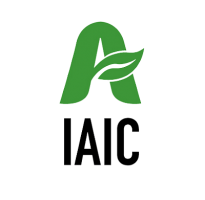
Link to: IAIC Proceeding
Proceeding of International Agriculture Innovation Conference
A publication of the International Association for Agricultural Sustainability (IAAS)

A publication of the International Association for Agricultural Sustainability (IAAS)
Jorge Orozco Aceituno, Thunwadee Tachapattaworakul Suksaroj, Chifumi Takag
2020 volume 1 ︱pages44–53(2020)
One-third of the edible parts of food produced globally for human consumption gets lost or wasted throughout the food supply chain. It is wasting the resources already invested while the food security is becoming an increasingly global urgent issue. The food waste problems and proposed solutions have been investigated intensively in developed countries, whereas there is a little information on food waste problem and its solutions that are being implemented in developing countries. The experience, shared challenges and opportunities between developing countries may offer valuable insight on how to better solve the food waste problem in their context. This research aimed to explor the food waste situation in two agricultural-based developing countries, Thailand and Guatemala, with the objective of analyzing their similarities, describing the problem and solutions along the food supply chain and finally proposing a strategic action plan for Guatemala. In depth interviews with key informants along the food supply chain since the upstream (producers), mid-stream (distribution and retailing) until the downstream (consumers and disposal) has been implemented from August to December 2018 by face-to-face interview (Thailand) and Skype interview (Guatemala). The twelve and seven key informants from Thailand and Guatemala were identified and included into the study respectively. The data were analyzed by thematic analysis and the results showed that both countries share similarities along the food supply chain. In the major upstream barriers in both countries were the food losses during harvesting, inadequate/effective storage and transportation and low access to affordable technology. The solutions proposed in Thailand included partnerships build-up to prevent the food waste since upstream activity and design value added products. In the midstream as well in the downstream, the consumer behavior continues to be the main constraint in both countries. Solutions proposed include collaboration between farmers and retailers, awareness campaigns and discounted prices for less than perfect produce. Other shared challenges were the lack of governmental support, preference for landfill disposal, lack of awareness, challenging transportation and infrastructure, inadequate/good packaging among others. Main promoters of solutions of both countries are mostly NGO’s and the private sector. A strategic approach was also proposed based on Thailand-Guatemala gaps analyzed from the diverse challenges and solutions that were identified during this study. The efforts in Thailand can be useful as a forecast of the potential challenges, pitfalls, and solutions for the food waste problem, and can be used as a guide for future projects in other developing countries.
food waste, food loss, food supply chain, thematic analysis, developing countries
International Master Program of Agriculture, College of Agriculture and Natural Resources, National Chung Hsing University, Taiwan
Jorge Orozco Aceituno
International Master Program of Agriculture, College of Agriculture and Natural Resources, National Chung Hsing University, Taiwan
Chifumi Takagi
ASEAN Institute for Health Development, Mahidol University, Thailand
Thunwadee Tachapattaworakul Suksaroj
 Credit: unsplash.com IAIC2020-P037
Credit: unsplash.com IAIC2020-P037 